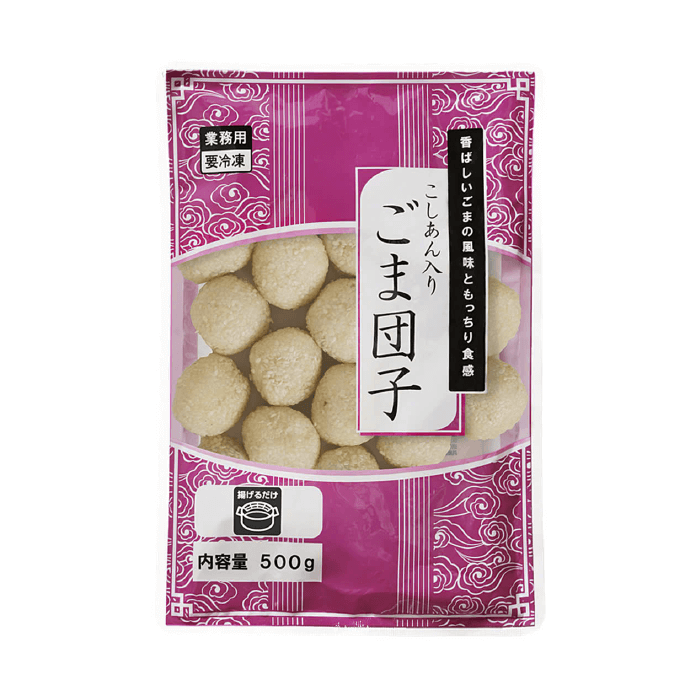More than just a cooking process, Teppanyaki is a distinctive culinary performance art where the chef interacts directly with diners across the Teppan grill. So, what exactly is Teppanyaki? Where are some noteworthy restaurants to try it? Let’s explore the information Kamereo shares below!
⛩ This article belongs to the JAPANESE FOOD CULTURE series
This is a series of articles sharing interesting knowledge about the culture, dishes, and authentic recipes of the Land of the Rising Sun.
What is Teppanyaki?
Teppanyaki, a unique Japanese culinary method, combines the two words “teppan,” meaning iron plate, and “yaki,” meaning grilled. The core of this style lies in preparing dishes directly on a large teppan grill, typically made of thick stainless steel with high heat resistance. The grill has a rectangular or semi-circular design with flexible dimensions to suit the space of each restaurant.
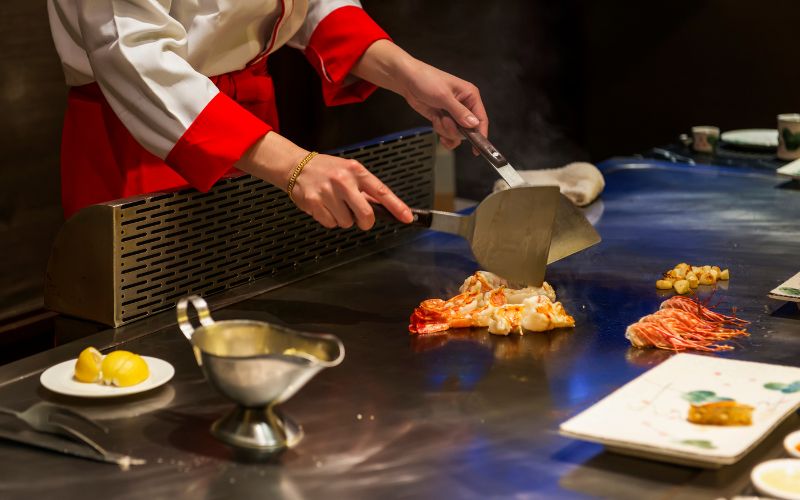
The art of Teppanyaki is not limited to cooking; it is also a captivating performance. Skilled chefs showcase their abilities by expertly juggling ingredients, using knives, forks, and spatulas with mastery. Even pepper shakers can become props in the performance.
What sets Teppanyaki apart from other cooking methods is the direct interaction between the chef and the customers. Diners not only enjoy freshly prepared dishes, preserving their freshness, but also have the opportunity to observe the entire process. They can even converse with the chef and request adjustments to the dish’s flavor according to their personal preferences.
The Origin of Teppanyaki Cooking Technique
Although widely recognized as part of Japanese cuisine, the Teppanyaki cooking technique surprisingly originated in the West. In the 15th century, Spanish sailors on long voyages came up with the idea of cooking on steel plates placed on their ships. This convenient method gradually spread to various regions around the world, and Japan was one of them.
In the early 20th century, a Japanese-American chef made significant improvements to the method of cooking on steel plates, laying the foundation for modern Teppanyaki style. A crucial turning point came in 1945 when the Misono restaurant in Japan officially introduced Teppanyaki to diners.
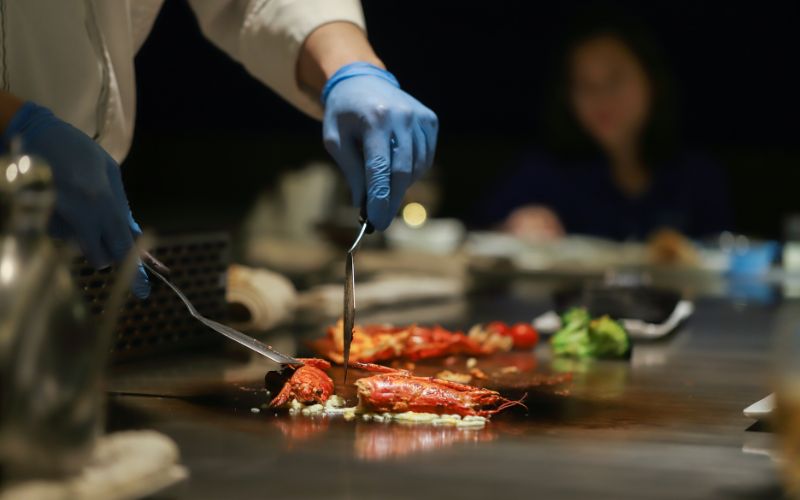
Requirements for Cooking with Teppanyaki Technique
To ensure that Teppanyaki dishes are prepared perfectly, it’s essential to pay attention to the following important factors, from tools and ingredients to the chef’s skills:
- Teppan Plate: This is the metal surface that serves as the main cooking table. The Teppan plate is usually made of cast iron or steel with a thickness of about 8cm. This design helps the plate retain heat well, ensuring that the food cooks evenly without burning.
- Ingredients and Seasonings: Traditional ingredients commonly found in Teppanyaki include Japanese beef, fresh seafood, a variety of vegetables, noodles, and various types of cakes. Regarding seasonings, chefs often use basic ingredients such as salt, pepper, vegetable oil, and unsalted butter to highlight the natural flavors of the ingredients.
- Chef’s Skills and Safety: A Teppanyaki chef needs solid cooking skills and must skillfully use specialized tools such as spatulas, forks, and knives. In particular, the chef needs to know how to adjust the heat source from wood, gas, etc., to control the temperature on the large metal surface, avoiding burns or burning the food.
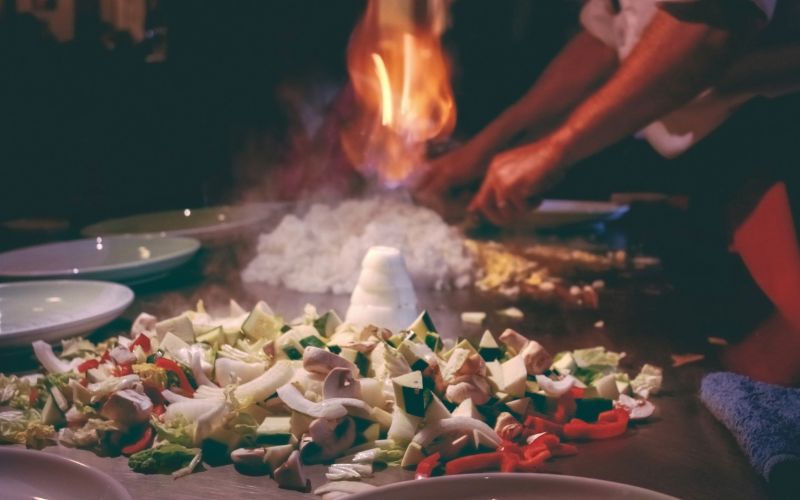
Famous Japanese Dishes Prepared with Teppanyaki Technique
The Teppanyaki technique attracts diners with its ability to deliver unique culinary experiences, highlighting the natural flavors of many Japanese dishes:
- Okonomiyaki Japanese Pancake: This appealing pancake is created from a diverse combination of wheat flour, cabbage, eggs, meat, seafood, and vegetables. All the ingredients blend together and are grilled directly on the hot Teppan table, then enjoyed with rich Okonomiyaki sauce, creamy mayonnaise, and a topping of seaweed and bonito flakes.
- Yakisoba Stir-fried Noodles: Delicious chewy Japanese noodles are stir-fried with cabbage, pork, or seafood, soaking up the flavors on the Teppan surface. The dish is often garnished with red ginger, bonito flakes, and a fried egg, showcasing the chef’s dexterity.
- Seafood and Vegetables: Shrimp, abalone, scallops, potatoes, carrots… when prepared using the Teppanyaki method, they retain their freshness and release an enticing aroma that stimulates the taste buds.
- Beef and Steak: Teppanyaki is an ideal choice to honor the excellent flavor of high-quality Japanese beef such as Wagyu A5, Kobe, and Matsusaka. The stable temperature of the Teppan table ensures the meat cooks evenly, maintaining its tenderness and distinctive delicate flavor.
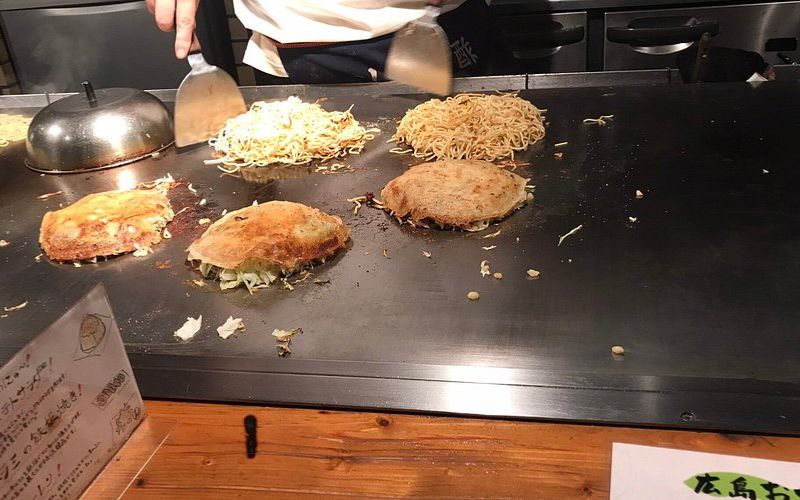
Why is Teppanyaki Considered a Multi-Sensory Japanese Culinary Experience?
Teppanyaki is truly a special cooking technique that harmoniously combines all five senses, providing unique experiences clearly demonstrated through the following elements:
- Sight: Diners directly witness skillful cooking performances, from the quick and decisive cutting of ingredients to the artistic juggling techniques and food plating.
- Hearing: The characteristic sizzling sound as fresh ingredients come into contact with the hot grill, combined with the clinking of knives and spatulas, creates a lively culinary symphony.
- Smell: The rich and intense aroma of the dishes spreads through the space, stimulating diners’ appetites even before tasting.
- Touch: A diverse range of sensations, from the warmth of the plate, the tenderness of each slice of meat, to the crispness of fresh vegetables.
- Taste: Finally, the taste buds are awakened by the delicate flavors of the dish, the harmonious combination of distinctive seasonings and fresh ingredients.
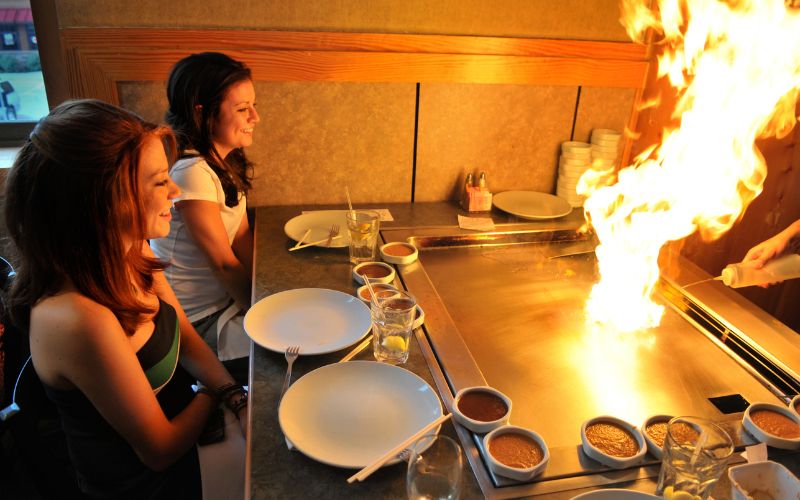
Delicious Teppanyaki Restaurants in Ho Chi Minh City
Below are suggestions for top Teppanyaki restaurants in HCMC, ideal destinations for those who love the combination of distinctive cuisine and a cozy atmosphere:
Ine Teppanyaki & Sushi
General Information:
- Address: 87 Yersin Street, Cau Ong Lanh Ward, District 1, HCMC
- Phone: 078 494 1413
- Opening Hours: 11:00 – 14:00 and 17:30 – 22:30
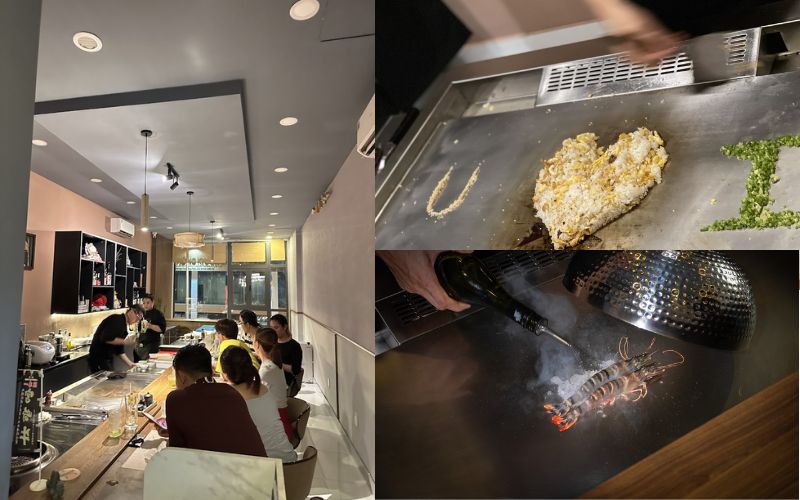
Ine Teppanyaki & Sushi is a cozy omakase restaurant with only 12 seats, nổi bật with premium A5 Wagyu teppanyaki such as Miyazaki and Kagoshima. The beef is melt-in-your-mouth tender, grilled on the spot, and served with 2-year-aged miso sauce, salt, pepper, and mustard, preserving its original flavor. With its quality and worthy experience, it is an ideal destination for Japanese food enthusiasts.
Kobe Teppanyaki
General Information:
- Address: 13A Tu Xuong Street, Vo Thi Sau Ward, District 3, HCMC
- Phone: 028 3932 0187
- Opening Hours: 10:00 – 22:00
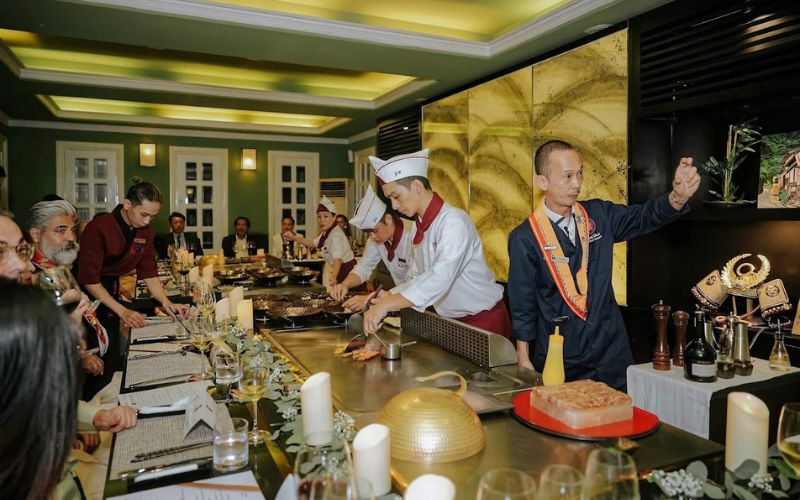
Kobe Teppanyaki is a high-class teppanyaki restaurant in HCMC, nổi bật with its luxurious old villa setting and refined Japanese style. The restaurant serves premium ingredients such as French foie gras, Australian abalone, and Canadian cod. In particular, Kobe Teppanyaki also scores points with its premium beef selections such as Kobe, Satsuma, and Black Angus, carefully chosen for tenderness, marbling, and flavor.
Delicious Teppanyaki Restaurants in Hanoi
To fully experience Teppanyaki in Hanoi, explore these prominent addresses with luxurious spaces and diverse menus:
Nuboko Sushi & Teppanyaki
General Information:
- Address: 37 Ngo Quyen Street, Phan Chu Trinh Ward, Hoan Kiem District, Hanoi
- Phone: 034 489 1168
- Opening Hours: 11:30 – 14:00 and 17:30 – 22:00

Nuboko Sushi & Teppanyaki is an authentic Japanese fine dining restaurant in Hanoi, nổi bật with its Teppanyaki counter where diners can enjoy premium grilled dishes while watching captivating cooking performances. Additionally, the Omakase Sushi counter offers a refined experience, from knife skills to guiding the palate according to traditional omakase standards. The space, quality, and service are meticulously cared for down to the smallest detail.
Teppanyaki Diamond
General Information:
- Address: 3 Phan Ke Binh Street, Cong Vi Ward, Ba Dinh District, Hanoi
- Phone: 0855 829 555
- Opening Hours: 17:00 – 03:00
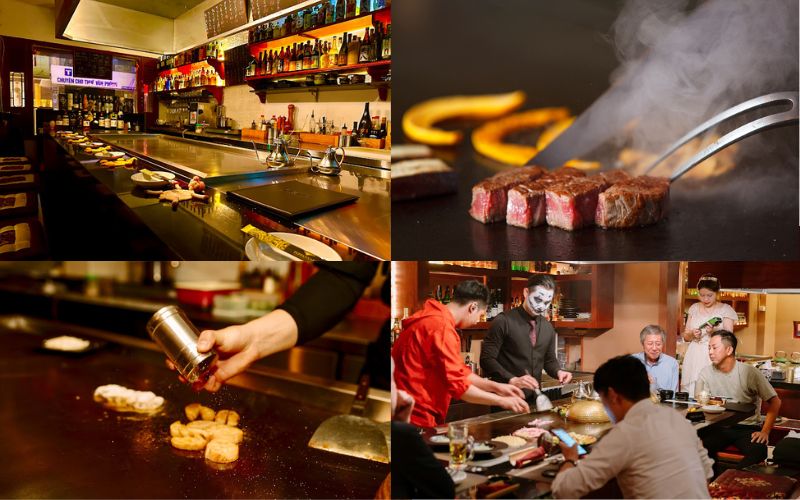
Teppanyaki Diamond is one of the rare authentic teppanyaki restaurants in Hanoi, focusing on food quality rather than elaborate performances. The atmosphere is cozy and lively, with the owner, Hoang Ba Tan, personally grilling each dish while cooking and chatting enthusiastically. Each serving is meticulous and refined, embodying the true spirit of traditional Japanese teppanyaki.
Buy High-Quality, Authentic Japanese Ingredients at Kamereo
Kamereo is a partner of the Gyomu Japan supermarket chain in Vietnam, offering access to a supply of authentic Japanese ingredients at competitive prices. As a pioneering supplier in applying technology, we continuously strive to simplify the entire food supply chain, aiming to optimize the procurement process.
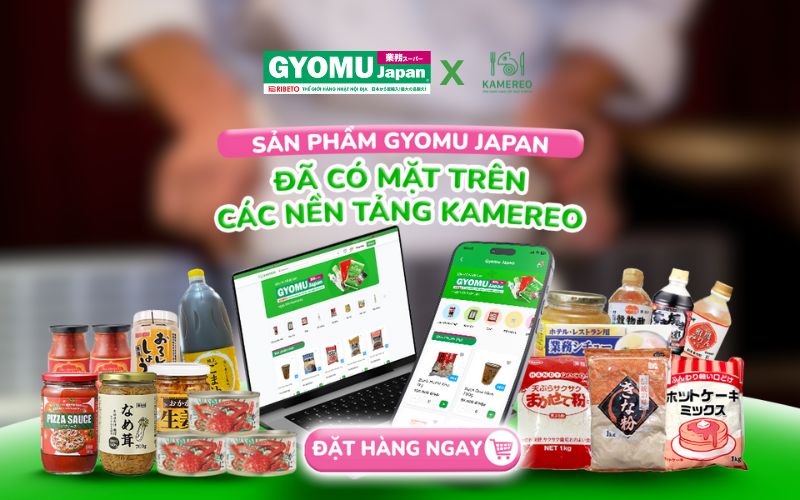
Currently, Kamereo offers over 3000 different items, including fresh food, frozen foods, a variety of beverage ingredients, and specialized kitchen utensils. As a result, we are confident in our ability to comprehensively meet all the ingredient and supply needs of businesses operating in the restaurant and food service (F&B) sector.
To ensure optimal quality for each product type, Kamereo has also built a modern storage system with specialized cold and frozen storage rooms and a 3-layer quality control process. Each area is equipped with strict temperature and humidity control devices, creating the best storage conditions for each item.
Kamereo’s outstanding difference compared to traditional suppliers is also reflected in its smart electronic invoicing system, conveniently integrated into the application. Moreover, invoices are sent immediately after payment is completed, minimizing the loss of documents and speeding up the financial reporting process for businesses.
In particular, Kamereo scores points for its flexible ordering support until 12:00 AM and its commitment to on-time delivery, quickly before 6:00 AM the next day. This allows customers to easily ensure continuity in their business operations.
Best selling authentic Japanese domestic products at Kamereo:
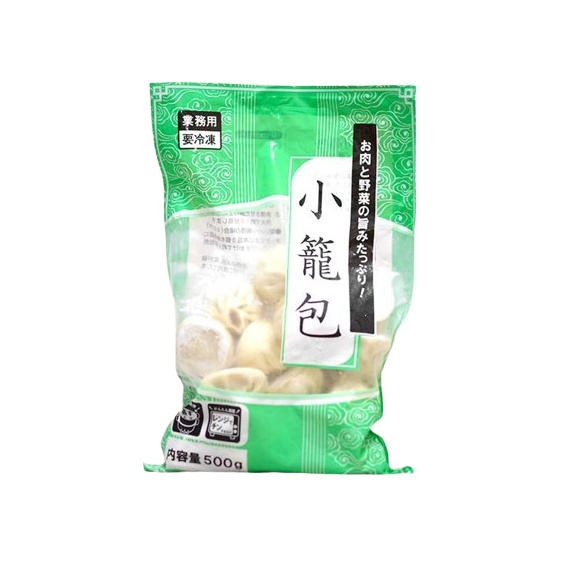
Frozen Soup Dumplings 500g
199,000đ/PACK
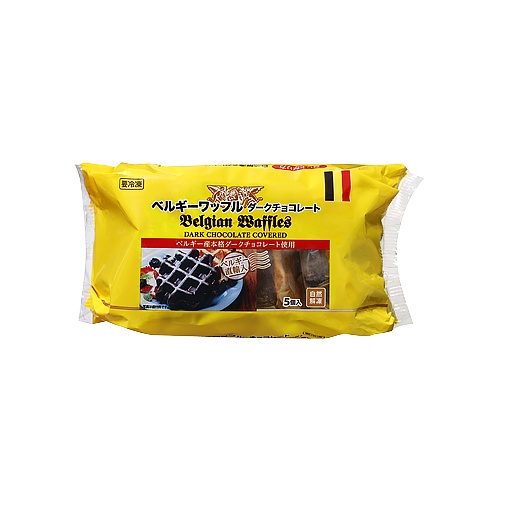
Belgian Frozen Waffle With Chocolate Flavor 300g
100,000đ/PACK
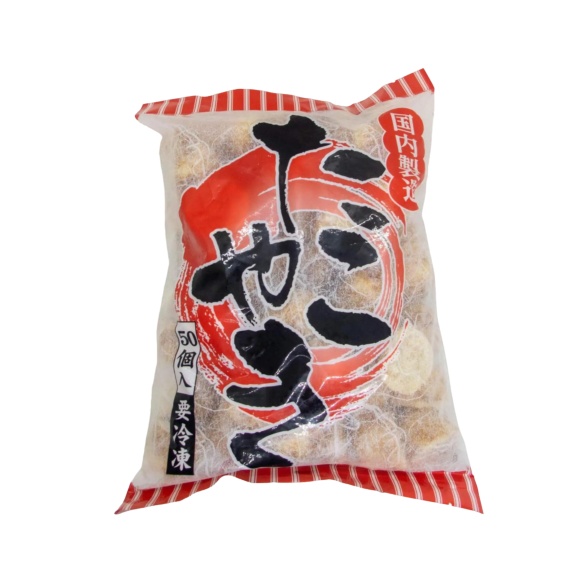
Frozen Takoyaki (Octopus Balls) 1kg
219,000đ/PACK
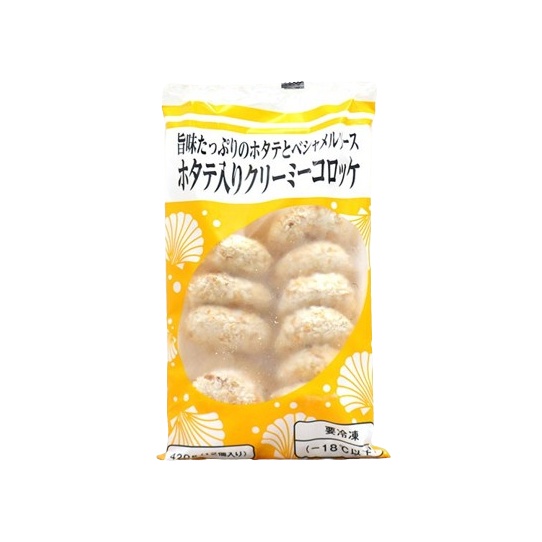
Frozen Fried Scallop Cakes With Cream Sauce 420g
175,000đ/PACK

Frozen Churros 500g
52,683đ/PACK
54,000đ/PACK

Frozen Strawberry Churros 500g
55,000đ/PACK
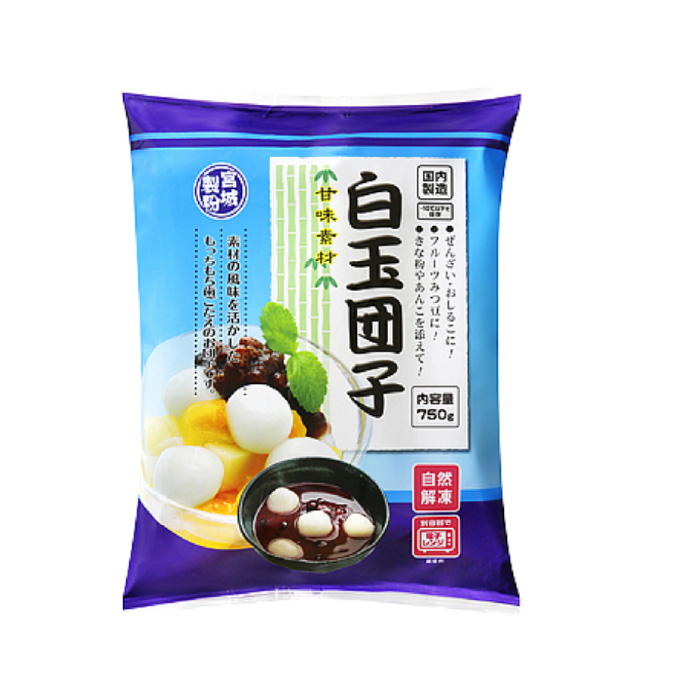
Frozen Shiratama Dango 750g
100,000đ/PACK
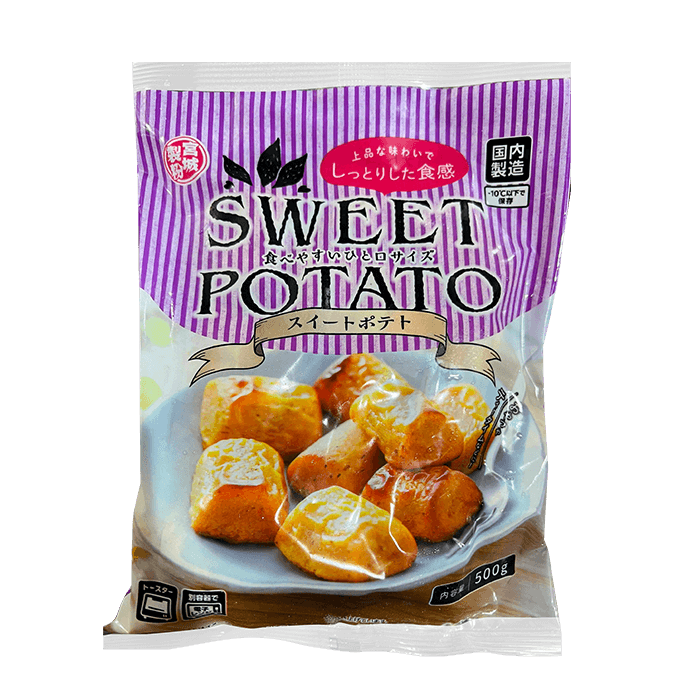
Frozen Sweet Potato Cake 500g
105,000đ/PACK
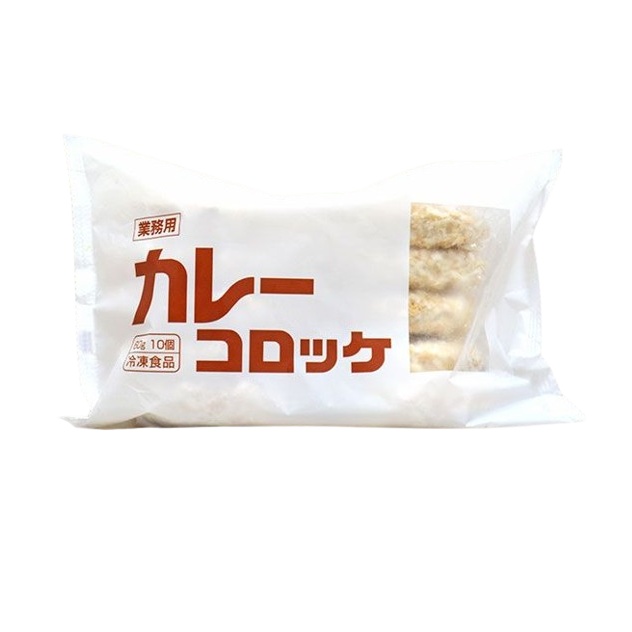
Korokke Frozen Curry Filled 600g
99,000đ/PACK
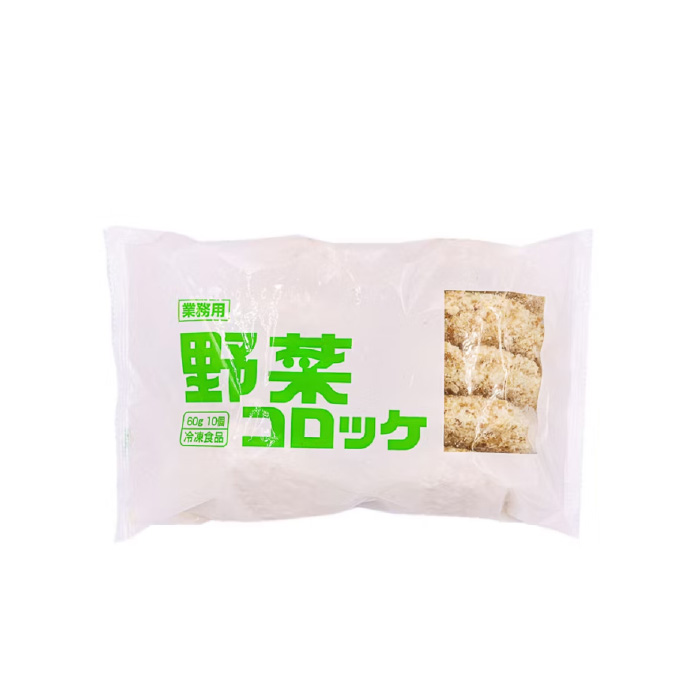
Frozen Vegetable Filled Korokke 600g
99,000đ/PACK
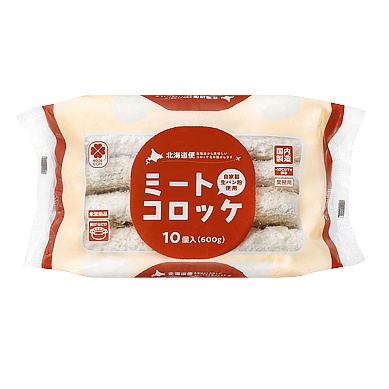
Frozen Meat Filled Korokke 600g
99,000đ/PACK
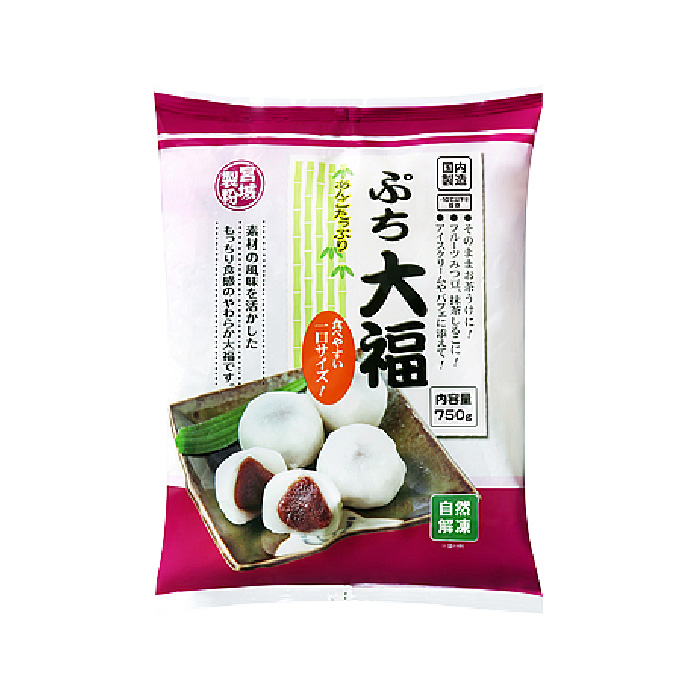
Frozen Daifuku Mochi 750g
115,000đ/PACK
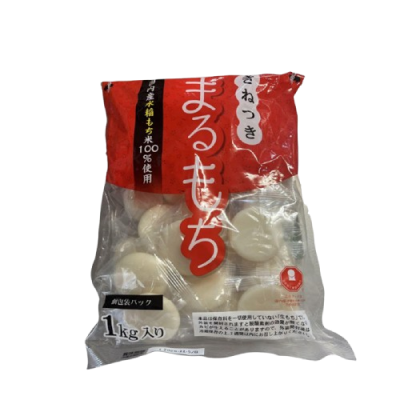
Maehara Seifun Dried Mochi 1kg
150,000đ/PACK
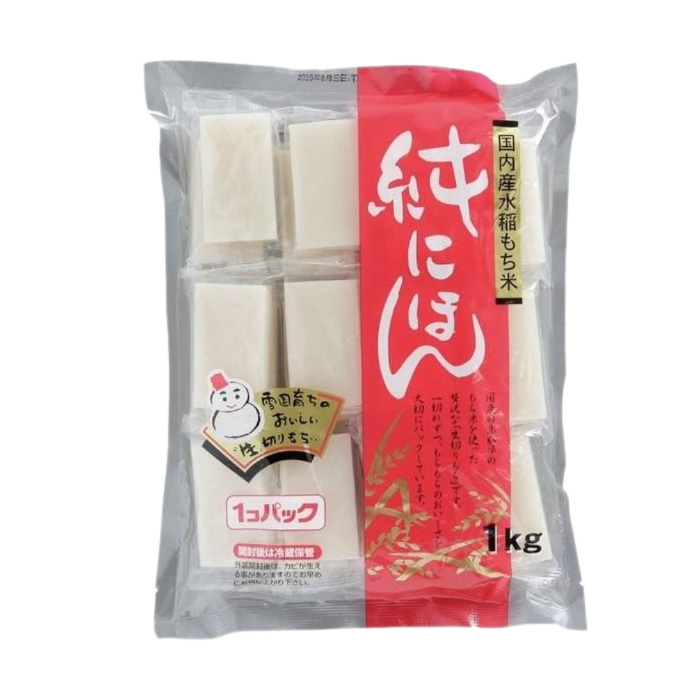
Original Flavour Mochi 1kg
145,000đ/PACK
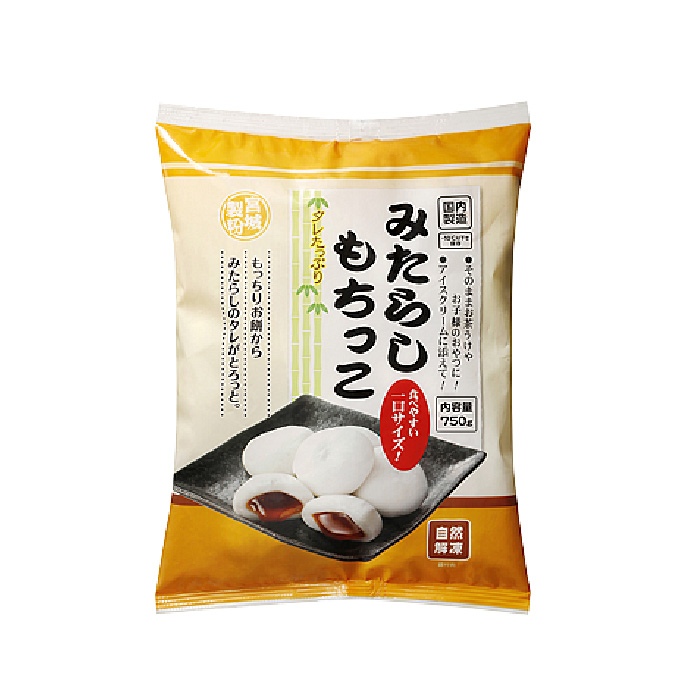
Frozen Mochi With Mitarashi Sauce Filling 750g
115,000đ/PACK
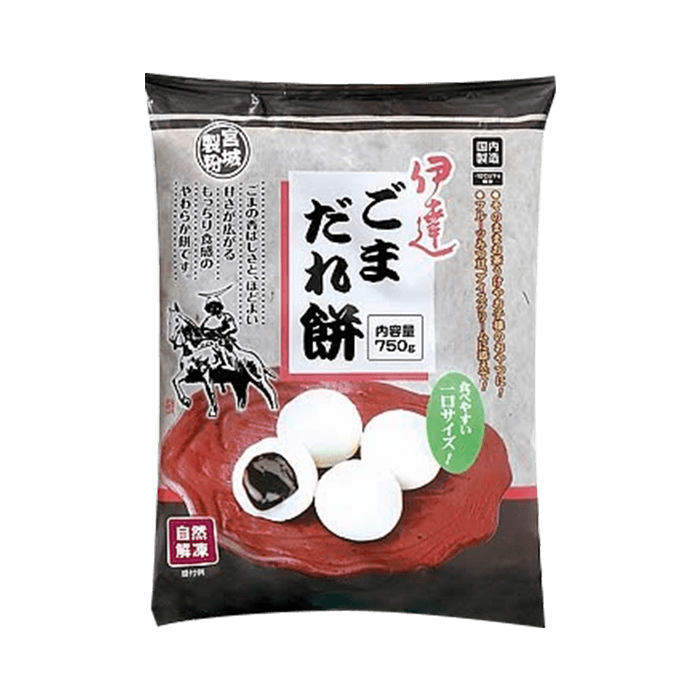
Frozen Sesame Filling Mochi 750g
115,000đ/PACK
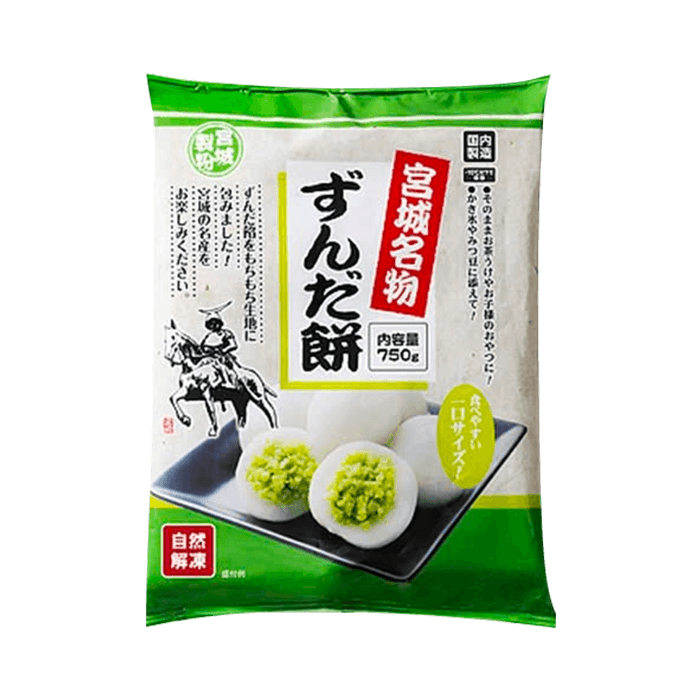
Frozen Green Bean Mochi 750g
115,000đ/PACK
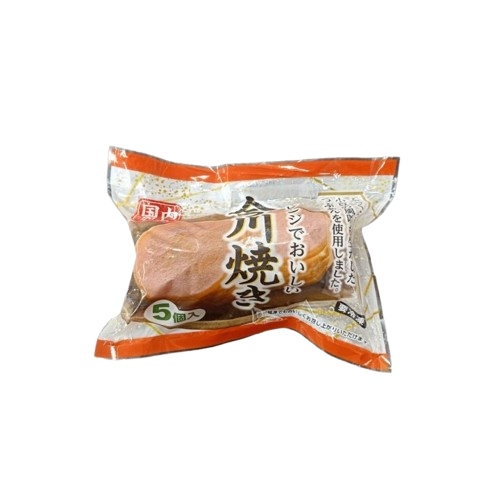
Imagawa Frozen Yaki With Red Bean Filling 400g
98,000đ/PACK

Frozen Fried Shrimp Cakes 400g
185,000đ/PACK
Conclusion
The article above has provided an overview of teppanyaki, from its origins to the necessary standards and suggestions for quality dining locations. If you want to elevate the experience of this delicious dish at your business establishment, trust and shop at Kamereo. Also, regularly follow the Food and Lifestyle section to update on the latest culinary trends and knowledge!
See more:



